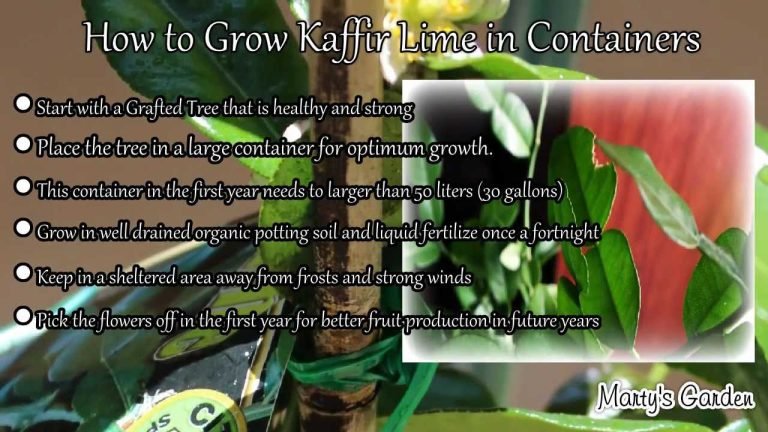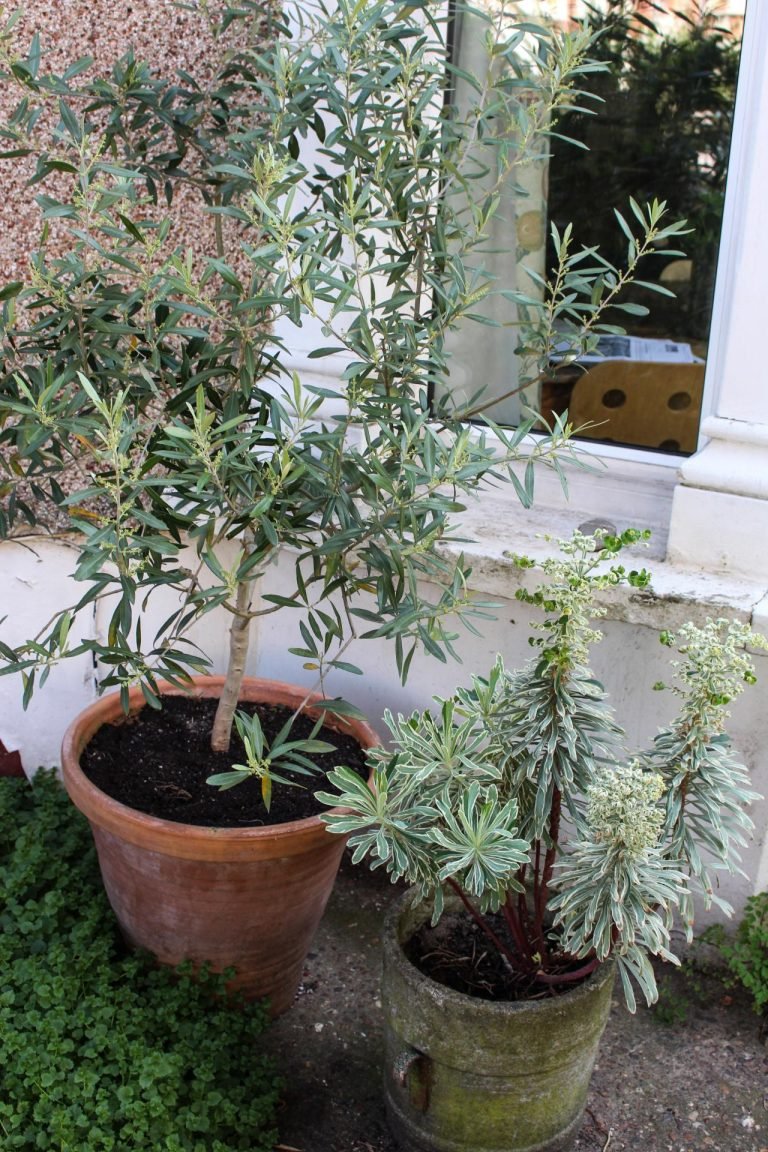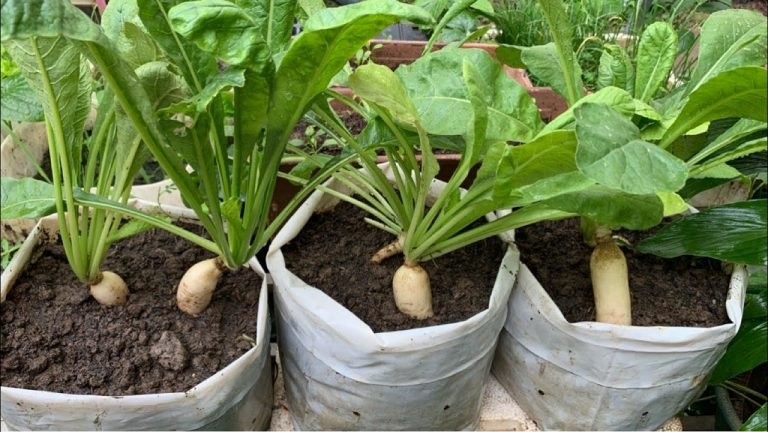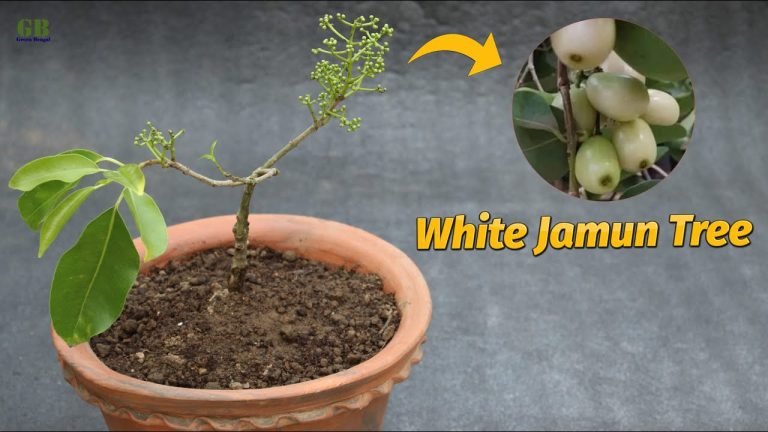how to grow passion fruit in a pot – [Beginners Guide]
If you’re looking for a unique and rewarding gardening experience, growing passion fruit in a pot might just be the perfect fit for you. Not only is this tropical fruit delicious and packed with nutrients, but it’s also surprisingly easy to grow in a pot, making it a great option for those with limited outdoor space.
As someone who has grown passion fruit in pots myself, I can attest to the many benefits of this method. For one, growing in a pot allows you to control the environment and ensure that your plants are getting the proper amount of sunlight, water, and nutrients. It also makes it easier to protect your plants from pests and diseases.
Another advantage of growing passion fruit in a pot is that it can be done virtually anywhere – on a balcony, patio, or even indoors. This means that even if you live in an apartment or don’t have a lot of outdoor space, you can still enjoy the satisfaction of growing your own delicious fruit.
In this guide, we’ll cover everything you need to know to successfully grow passion fruit in a pot, including selecting the right container, choosing the right soil and fertilizer, and providing the right amount of water and sunlight. We’ll also discuss some common challenges you may encounter and how to overcome them.
So if you’re ready to embark on a fun and rewarding gardening adventure, let’s dive in and learn how to grow passion fruit in a pot!
Pot or container selection
When it comes to growing passion fruit in a pot, selecting the right container is also critical to the health and productivity of your plants. Here are some key factors to consider when choosing a pot for your passion fruit:
Size and capacity
Passion fruit plants are vigorous climbers and can grow up to 20 feet (6 meters) long. Therefore, it’s important to choose a pot that is large enough to accommodate the root system and provide ample support for the vines. A container that is at least 18 inches (45 cm) in diameter and 18 inches (45 cm) deep is recommended for optimal growth.
Construction
The construction of your pot is also important for the health of your passion fruit. Here are some things to keep in mind:
- Material: Choose a pot that is made of a durable material that can withstand the weight of the soil and the pressure of the vines. Terracotta, plastic, and fiberglass pots are all good options. Avoid metal pots, as they can become too hot in direct sunlight, and wooden pots, as they may rot over time.
- Drainage: Make sure your pot has drainage holes in the bottom to prevent waterlogging, which can lead to root rot. You can also add a layer of gravel or sand to the bottom of the pot to aid in drainage.
- Support: Passion fruit vines can become quite heavy, so it’s important to choose a pot with a sturdy base and provide a trellis or other support for the vines to climb on. This will help prevent the plant from toppling over and provide ample space for the fruit to develop.
By choosing a pot that is large enough and constructed with the right materials, drainage, and support, you can create an optimal environment for your passion fruit to thrive and produce a bountiful harvest.
Make suitable soil mix
Growing passion fruit in a pot requires a specific type of soil mix to ensure optimal growth and yield. It’s important to choose a high-quality potting mix that is well-draining and nutrient-rich. A good potting mix for passion fruit should contain a blend of peat moss, perlite, and vermiculite, along with organic fertilizers to provide essential nutrients for your plants.
It’s also essential to maintain the right pH level in the soil for optimal growth. Passion fruit plants prefer a slightly acidic soil pH level between 6.0 and 6.8. You can adjust the pH level of your soil by adding pH adjusters like sulfur, aluminum sulfate, or lime to lower or raise the pH level.
Another important aspect of soil composition for growing passion fruit in a pot is the addition of organic matter such as compost, which helps to improve soil structure, texture, and nutrient content. The use of organic matter also promotes healthy root development and enhances soil fertility, which leads to improved plant growth and a more abundant yield.
In summary, selecting the right soil mix and composition for growing passion fruit in a pot is essential for optimal growth, fruiting, and yield. By providing a well-draining, nutrient-rich soil mix with the right pH level and added organic matter, you can ensure your passion fruit plants thrive in their container environment.
How to plant the passion fruit?
Planting passion fruit in a pot at home is a simple process that can be done following these steps:
Step 1: Choose the right pot and location
Choose a pot that is at least 12 inches wide and deep, with drainage holes at the bottom to allow excess water to drain away from the roots. Also, choose a location that receives full sun for at least six hours a day.
Step 2: Prepare the potting mix
Fill the pot with a high-quality potting mix that is well-draining and nutrient-rich. You can also add organic matter like compost, manure or worm castings to improve the soil quality.
Step 3: Plant the passion fruit seedling
Carefully remove the passion fruit seedling from its container, and gently loosen the roots to promote growth. Place the seedling in the center of the pot, making sure the root ball is level with the soil surface. Fill the pot around the root ball with soil, pressing it down gently to remove any air pockets.
Step 4: Support the plant
Passion fruit plants grow as vines and need support to climb. Place a trellis or stake in the pot, or against a nearby wall, to support the plant as it grows.
Step 5: Water and Fertilize
Water the plant deeply, but avoid overwatering. The soil should be moist but not waterlogged. Water the plant regularly, especially during hot and dry periods. Fertilize the plant every 3-4 weeks during the growing season with a balanced fertilizer, following the package instructions.
Step 6: Maintain the plant
Keep an eye on the plant for signs of pests or diseases, and remove any damaged or dead leaves. Prune the plant regularly to promote growth and remove any weak or diseased branches.
By following these steps, you can enjoy the beauty and delicious taste of homegrown passion fruit.
How to care for passion fruit?
Caring for Passion Fruit in a Pot at Home
Passion fruit is a tropical plant that can be grown in a pot at home with proper care. Here are some guidelines to help you care for your passion fruit plant:
Watering Requirement
Passion fruit needs regular watering, but overwatering can lead to root rot. Water your passion fruit plant deeply when the top inch of soil feels dry to the touch. Watering once or twice a week, depending on weather and soil conditions, is usually sufficient. Avoid getting water on the leaves or fruit as this can promote disease.
Fertilizer Requirement
Passion fruit is a heavy feeder and requires regular fertilization to produce fruit. Use a balanced fertilizer with equal amounts of nitrogen, phosphorus, and potassium, or a 2-1-1 ratio, every two weeks during the growing season. You can also use organic fertilizer or compost to provide nutrients to the plant.
Sunlight Needs
Passion fruit needs plenty of sunlight to grow and produce fruit. Choose a spot that gets at least 6 hours of direct sunlight per day. If you live in a region with hot summers, you may need to provide some shade during the hottest part of the day.
Pruning & Training
Pruning and training your passion fruit plant can help promote healthy growth and fruit production. Begin pruning your passion fruit plant when it is young to establish a strong framework. Remove any dead, diseased, or damaged wood, and thin out the plant to allow for better airflow. Train the plant to a trellis or other support structure as it grows.
Other Care
In addition to watering, fertilizing, and pruning, here are some other tips to help care for your passion fruit plant:
- Mulch around the base of the plant to retain moisture and suppress weeds.
- Protect your plant from pests and diseases by monitoring regularly and treating any issues promptly.
- Harvest fruit when it is fully ripe, which is indicated by the fruit falling off the vine or by the skin turning slightly wrinkled.
By following these guidelines, you can successfully grow and care for passion fruit in a pot at home.
Common problems
Other Issues
In addition to the common problems mentioned above, cherry tomatoes grown in pots may also face other issues such as:
- Overcrowding: if you plant too many cherry tomato plants in a single pot, they may compete for nutrients and water, which can lead to stunted growth and poor production.
- Root Bound: when the roots of a cherry tomato plant become too big for the pot, they can become root-bound, which can lead to poor growth and production. To prevent this, consider repotting your plants into a larger container every year or so.
- Environmental Factors: extreme heat or cold, wind, and other environmental factors can also affect the growth and production of cherry tomatoes grown in pots. Make sure to protect your plants from these factors by providing shade or shelter as needed.
- Poor Soil Quality: using poor quality soil or not providing enough nutrients can also affect the growth and production of cherry tomatoes. Make sure to use a high-quality potting mix and fertilize regularly to ensure optimal growth.
By being aware of these common problems and taking steps to prevent or address them, you can ensure that your passion fruit plants grown in pots thrive and produce an abundance of delicious fruit.
Harvesting & storing homegrown passion fruit
Passion fruit should be harvested when they are fully mature and ripe, as unripe fruit will not have the best flavor. To determine if a passion fruit is ready for harvesting, look for the following signs:
Color: The fruit should have turned from green to either yellow or purple, depending on the variety.
Wrinkles: The fruit’s skin should be slightly wrinkled, which indicates that the fruit has fully matured.
Weight: The fruit should feel heavy for its size, indicating that it is full of juice.
To harvest the passion fruit, simply pick the fruit off the vine gently, taking care not to damage the vine or the fruit. The fruit can be stored at room temperature for several days, but it is best to eat it as soon as possible for the best flavor. If you need to store the fruit for a longer period, you can freeze the pulp by scooping it out of the fruit and placing it in a freezer-safe container. The frozen pulp can be stored for up to 6 months in the freezer.
Growing passion fruit in container – Conclusion
Congratulations on learning about how to grow passion fruit in a pot! You should now have a good understanding of the necessary steps to grow and care for passion fruit plants at home. It’s a fun and rewarding experience that can provide you with delicious, fresh fruit right from your own home.
By selecting the right container, soil, and following the proper care guidelines, you can create an optimal growing environment for your passion fruit plant. Regular watering, fertilization, and pruning will ensure that your plant grows healthy and productive.
Don’t hesitate to put this knowledge into practice and try growing your own passion fruit at home. With a little effort and patience, you can enjoy the benefits of homegrown passion fruit in a variety of recipes or enjoy it as a healthy snack.
So what are you waiting for? Give it a try, and you may be surprised by the results. Happy gardening!








